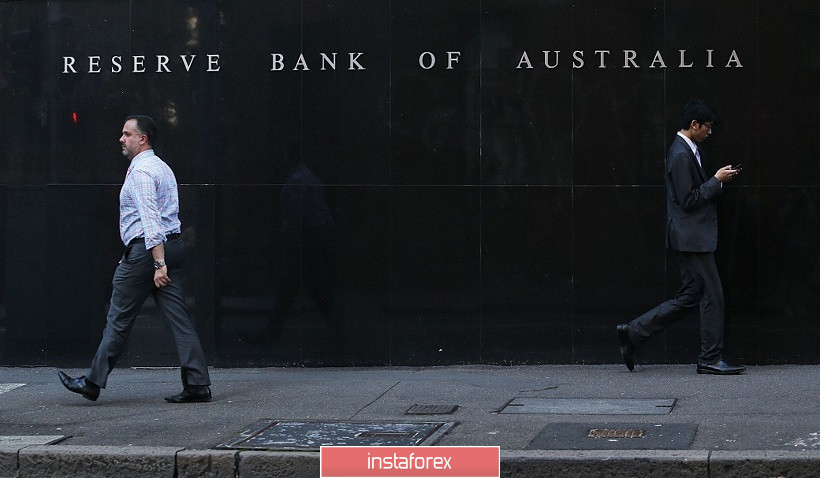First trading day of the week and the last day of November: the US dollar index fell in today's Asian session, updating multi-month lows. Low demand for the greenback is inertial: the greenback noticeably lost ground on Friday against the background of the strengthening of the stock market and the general interest in risk. The situation did not change on Monday: investors still prefer risky assets, while the dollar cannot find a foothold.
This fundamental background made it possible for buyers of the AUD/USD pair to test the 74th figure: the aussie crossed the 0.7400 mark for the first time in three months. Traders failed to gain a foothold in this price area, so this can be considered as "reconnaissance in force". In the medium term, the fate of the growth trend will depend on two factors. First of all, we are talking about the level of demand for the US currency. If the greenback continues to fall in the entire market, then the Australian dollar can prove itself - if, in turn, the members of the Reserve Bank of Australia allow it. Tomorrow we will find out the results of the RBA's final meeting for this year: the next meeting of the central bank's members will take place in February.

Traders are quite optimistic judging by the dynamics of AUD/USD. In anticipation of the December meeting, the aussie is growing in cross-pairs (for example, against the loonie or the kiwi). Most analysts share the optimism of investors - in their opinion, the central bank will take a "restrained-optimistic" position tomorrow, keeping all the parameters of monetary policy in the same form. This is facilitated by many factors - from the dynamics of economic indicators to the coronavirus situation in the country.
Key macroeconomic reports did not disappoint, at least. For example, Australian inflation, despite the coronavirus restrictions, still did not disappoint: the main indicators came out either at the level of forecasts, or exceeded the forecast values. The general consumer price index rose to 1.6% in quarterly terms (the forecast was slightly lower - 1.5%). On an annualized basis, the indicator came out of the negative area and reached 0.7% (fully in line with forecasts). The core inflation index did not disappoint either - the components as a whole came out in line with the general expectations.
But the labor market turned out to be an unexpected ally of the Australian currency. The growth rate of the number of employed jumped in October, reaching 178,000 (against the forecast of a decline of 29,000). This is the strongest growth rate since June this year, when Australia began to pull out of the lockdown. This result allows us to count on optimistic assessments from the RBA's members. Also in favor of the aussie's growth is the fact that the authorities of the state of South Australia decided to prematurely remove the strict restrictive measures that were introduced there due to the outbreak of the coronavirus. In general, the states and territories of Australia are now lifting almost all quarantine restrictions: there are almost no new cases of Covid-19 infection in the country.
It is worth noting that some analysts still entertain the possibility that the RBA may announce monetary policy easing tomorrow, while allowing the interest rate to fall into negative territory. In my opinion, these assumptions are unfounded. Firstly, the above-mentioned macroeconomic releases and representatives of the central bank themselves, in particular, Guy Debelle, who said that he doubted the effectiveness of negative rates as a tool for accelerating inflation and employment, speak in favor of maintaining a wait-and-see attitude. Secondly, it is worth recalling the rhetoric of the minutes of the last RBA meeting, in which the central bank rather positively assessed the prospects for the growth of the national economy and assured the market that it was not going to reduce the interest rate to the negative area.

Most likely, the results of tomorrow's RBA meeting will be optimistic and neutral. The central bank may allow easing of monetary policy, but this warning will only be in the form of a standard phrase in an accompanying statement (that the central bank will maintain its current policy and, if necessary, expand the bond purchase program). Such a wording is unlikely to frighten investors, especially given the growth of key indicators. Therefore, with a high degree of probability, the aussie will continue to rise against the greenback tomorrow.
From a technical point of view, the situation is as follows. The pair is between the middle and upper lines of the Bollinger Bands indicator on all of the higher timeframes (from H4 and up), which indicates the priority of growth. On timeframes from H4 to W1 (that is, except for the monthly chart), the Ichimoku indicator formed a bullish Parade of Lines signal when the price is above all the indicator lines, including the Kumo cloud. This signal indicates bullish sentiment. The strongest resistance is at 0.7450, the upper monthly Bollinger Bands line, which coincides with the lower border of the Kumo cloud. But first, AUD/USD buyers need to gain a foothold in the 74th figure - the results of today's Asian session showed us that the pair meets resistance when it breaks the 0.7400 mark. In my opinion, the aussie will not only enter this price area in the medium term, but also cross the 0.7450 price barrier. Therefore, you can open longs either from current positions, or following the results of tomorrow's RBA meeting.
 English
English 
 Русский
Русский Bahasa Indonesia
Bahasa Indonesia Bahasa Malay
Bahasa Malay ไทย
ไทย Español
Español Deutsch
Deutsch Български
Български Français
Français Tiếng Việt
Tiếng Việt 中文
中文 বাংলা
বাংলা हिन्दी
हिन्दी Čeština
Čeština Українська
Українська Română
Română

